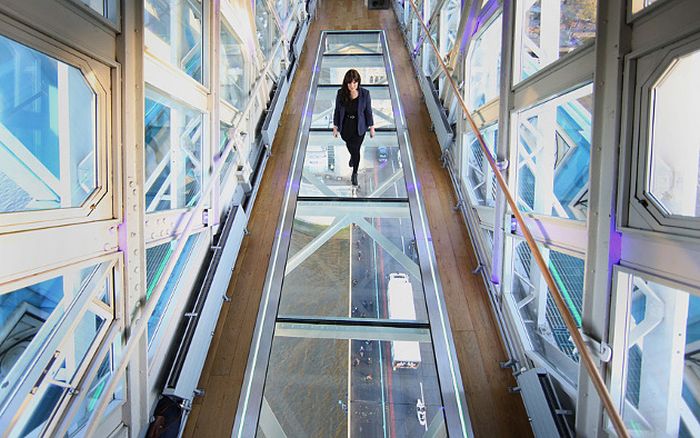|
|
Tower Bridge Walkway, London, England, United Kingdom
|
Incidents
In December 1952, the bridge opened while a number 78 double-decker bus (stock number RT 793) was on it. At that time, the gateman would ring a warning bell and close the gates when the bridge was clear before the watchman ordered the lift. The process failed while a relief watchman was on duty. The bus was near the edge of the south bascule when it started to rise; driver Albert Gunter made a split-second decision to accelerate the bus, clearing a three-foot drop on to the north bascule, which had not started to rise. There were no serious injuries.
The Hawker Hunter Tower Bridge incident occurred on 5 April 1968, when a Royal Air Force Hawker Hunter FGA.9 jet fighter from No. 1 Squadron, flown by Flight Lieutenant Alan Pollock, flew under Tower Bridge. Unimpressed that senior staff were not going to celebrate the RAF's 50th birthday with a fly-past, Pollock decided to do something himself. Without authorisation, Pollock flew the Hunter at low level down the Thames, past the Houses of Parliament, and continued on to Tower Bridge. He flew the Hunter beneath the bridge's walkway, remarking afterwards it was an afterthought when he saw the bridge looming ahead of him. Pollock was placed under arrest upon landing, and discharged from the RAF on medical grounds without the chance to defend himself at a court martial.
In summer 1973 a single-engined Beagle Pup was twice flown under the pedestrian walkway of Tower Bridge by 29 year old stockbroker's clerk Paul Martin. Martin was on bail following accusations of stockmarket fraud. He then 'buzzed' buildings in 'The City', before flying north towards the Lake District where he died when his aircraft crashed some two hours later.
|
|









